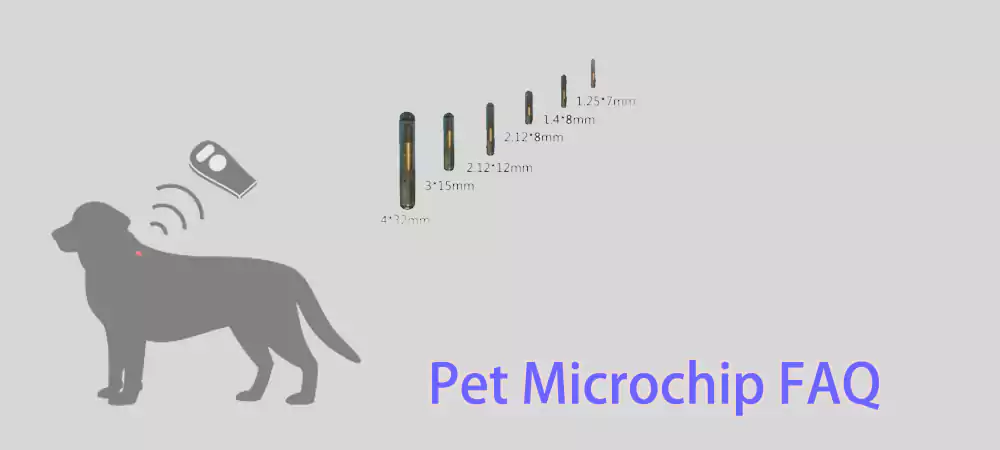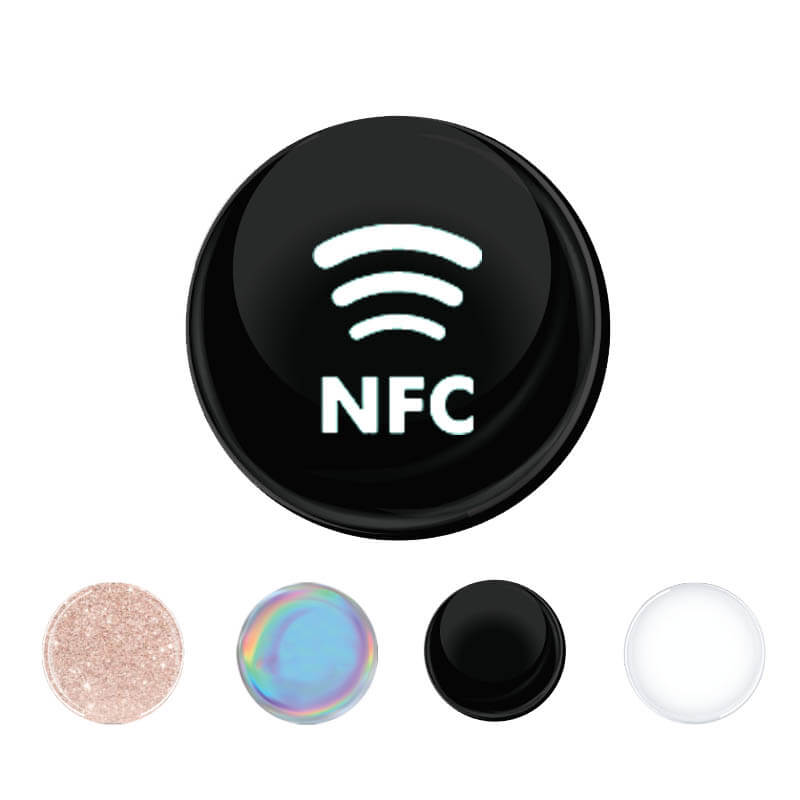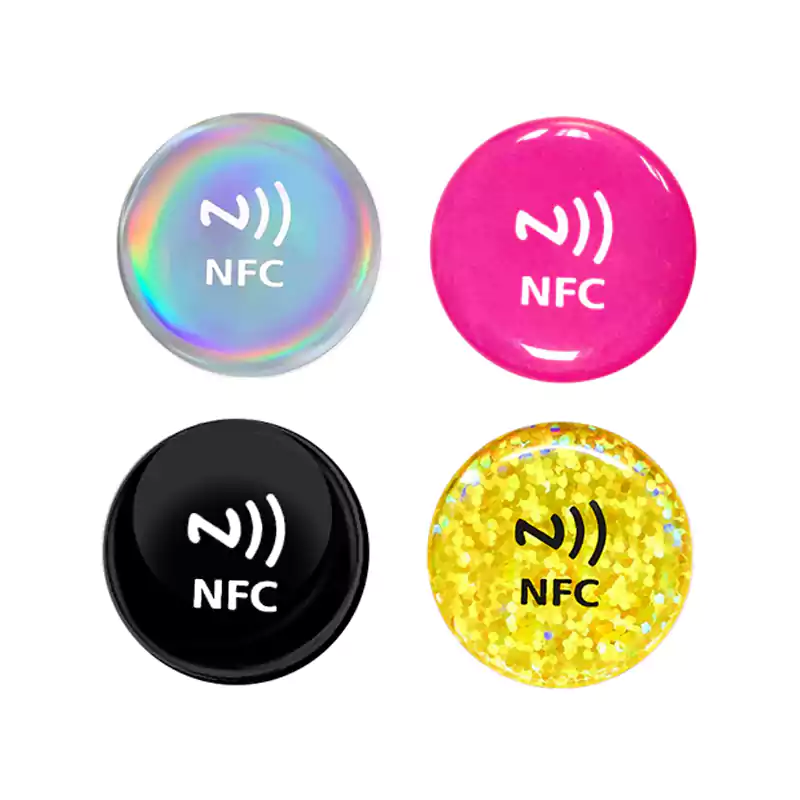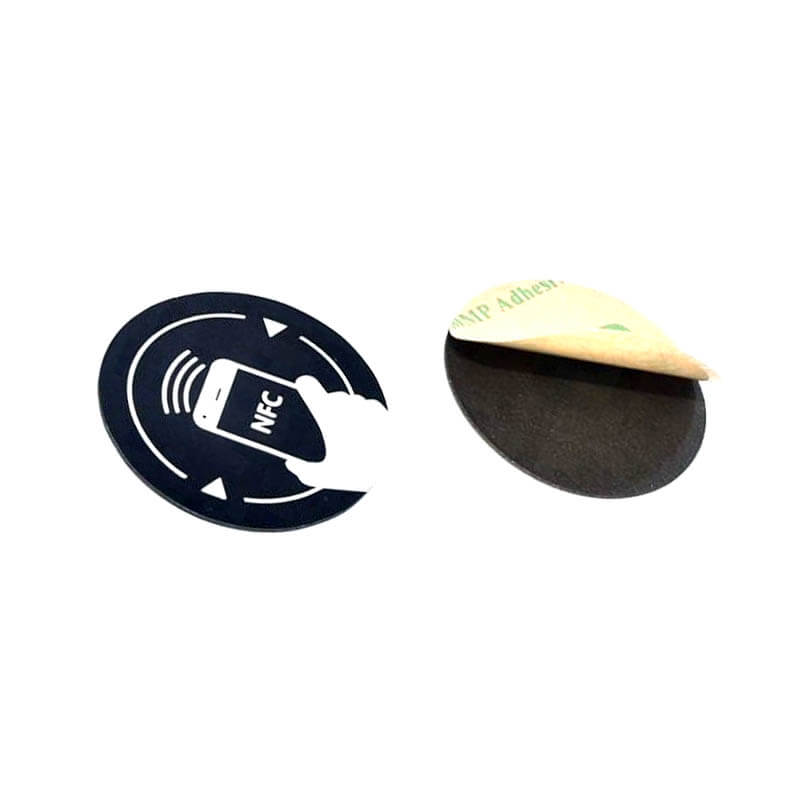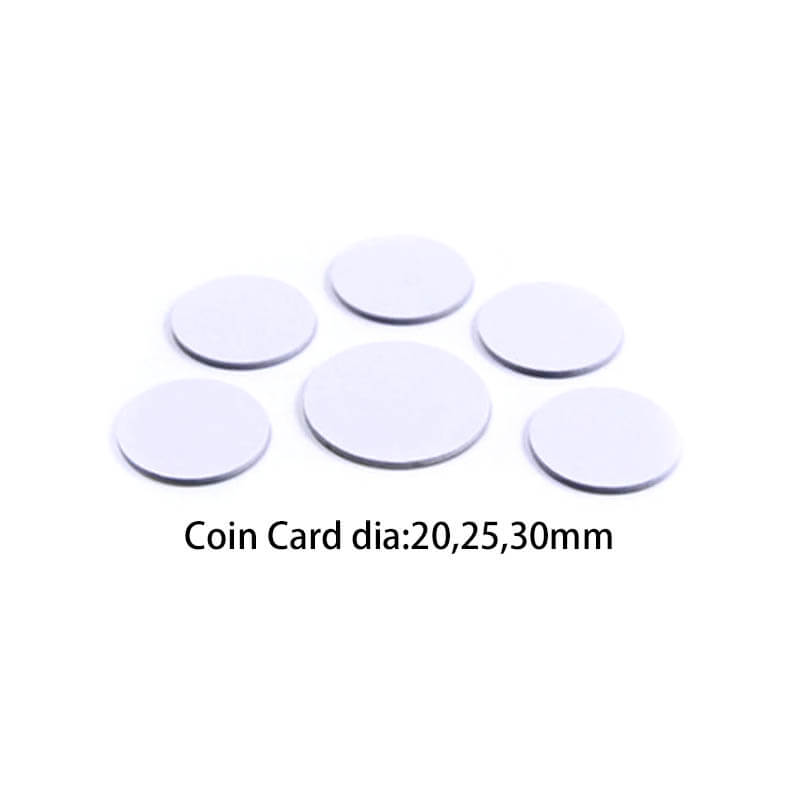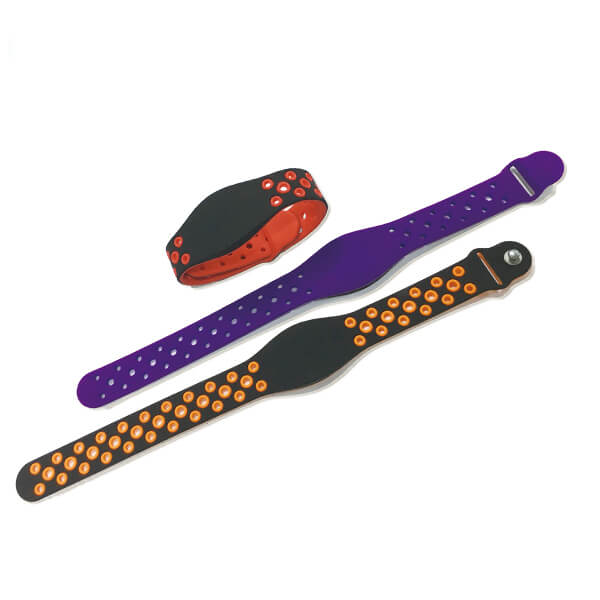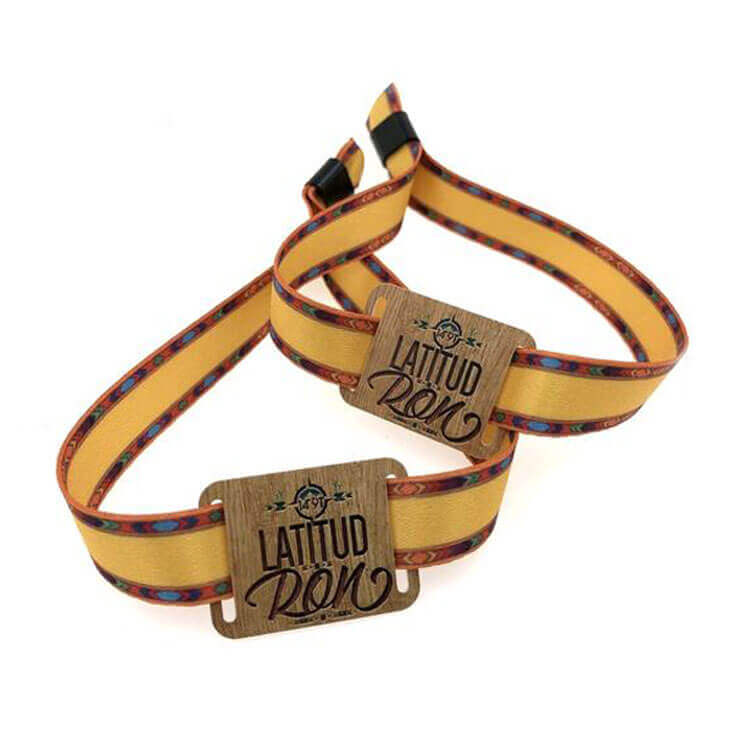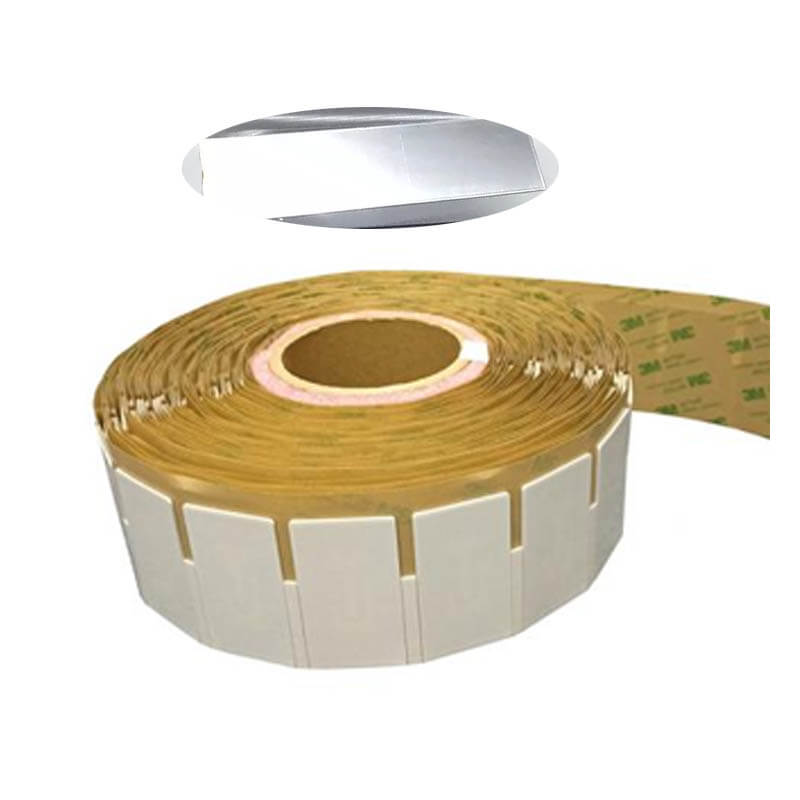What is a microchip?
A microchip is a small transponder that uses the radio-frequency identification (RFID) technique to identify your pets. The chip contains all the pets’ details ranging from a unique serial number to the next vet appointment. Once a microchip scanner is within the range, the chip will retrieve this data from its internal memory and transfer it to the scanner.
The microchip is relatively small and equals the size of a rice grain. It is also referred to as an identifying integrated circuit.
What powers the microchip?
The microchip itself is passive and does not have a battery. It only becomes active after detecting radio waves from a scanner.
How is a microchip implanted into my pet? Is it painful? Will it require anesthesia?
Microchip implantation is a simple process that takes a few seconds. The process is similar to administering any other routine shot. As such, you will not require any anesthesia or surgery to complete the process.
When you buy the microchip, it will come with a sterile applicator. All that will be required is to inject it under the pet’s skin between the shoulder blades.
Why should I microchip my pets?
Microchipping your pets is a crucial exercise. It is simple and inexpensive, making it one of the most accessible identification techniques.
When you use the microchip on your pets, you minimize the chances that they will get lost for good. If the animal has the chip, a scanner will capture all the necessary identification information.
Eventually, the pet recovery service will call you to help you reunite with your pet. Additionally, having a microchip can help you store crucial information that would otherwise be difficult to track.
However, you should ensure that you update the information regularly to get the best out of the microchip. Any outdated information will lead to tracing errors and eventual frustrations.
How much does it cost to implant a microchip on my pet?
The veterinary doctor will charge you an average of $42. This is a one-time fee (including the registration in the pet recovery database).
Where will I get a pet microchipping service?
Your veterinary officer will help with the microchip implantation. Most of them have ready chips for you to purchase and register.
Even better, the entire implantation process is fast. You’ll complete the task within a few minutes!
Can I implant a microchip myself?
Implantation may appear like a simple exercise, but it’s indeed complex. The functionality of the microchip will depend on how well you complete the process.
If you keep the tag too deep or facing the wrong direction, then you can be sure that the scanner will not detect it in the future.
Additionally, using too much force when injecting the pet may cause both physical and physiological harm. As such, you should always consider seeking the help of an expert veterinarian.
How big is the microchip needle?
The size of the needle used to administer a microchip into your pet is relatively small. The diameter varies from one manufacturer to the other. It ranges from 12 gauge to 15 gauge.
What type of information is stored in the microchip? Will it keep my pet’s vet records?
Most of the microchips available today can only store a unique identification number, specific to your pet.
However, some may allow you to store records of your pet’s medical data for easy access. This data will be from previous vet visits – the chip cannot capture the current health data of your pet.
Does a microchip have a tracking component?
No, pets’ microchips are not tracking devices. They have no GPS element to help you track your pet’s location.
Also, these microchips are short-range. They must be close to the scanner for them to release the data about the pet.
How long will the microchip last?
The microchip will serve your pet till its last day. The device neither has a battery nor any other moving part. As such, the chances of wearing out are significantly reduced.
Will microchipping interfere with the privacy of my pet?
No, the only detail contained in the tag is the identification number. As such, you can be sure that your pet’s sensitive data will be safe.
Additionally, all the details contained in the chip are strictly that which you provided during the registration process. Even then, not everyone has the right to access the data.
How will a microchip help me when my pet is lost?
The microchip does not contain any tracking device. However, it has an identification number that is unique to your pet. If anyone finds the pet, they’ll likely take it to the vet, where it will be scanned.
Once the vet gets the unique identification number, they will call the pet recovery service, and you’ll be called to pick the pet from their station.
As such, you should always ensure that you provide accurate information for a guaranteed reunion. This is especially crucial for physical addresses and telephone numbers.
What is microchip frequency?
Microchip frequency refers to the strength of radio waves released by the reader. Remember that the chip is not active, and it requires these frequencies to become active and release the pet’s data. The radio wave frequencies available for microchips include 134.2 kHz, 128 kHz, and 125 kHz.
What is ISO standardization for microchips?
ISO is an international regulatory body that assesses the suitability of all microchips. It ensures that the chips are of top-notch quality and that they meet the required size and shape requirements, regardless of the manufacturer.
ISO authorizes the use of low-frequency for animal implantation. As such, you should try to get a microchip that uses 134.2 kHz.
Can you scan a pet microchip with your phone?
No, a mobile phone on its own cannot read your pet’s microchip. However, you can get a Bluetooth or cable device that can enable your smartphone to capture the data in your pet’s microchip.
How does microchipping work for dogs?
Microchips use low-frequency radio waves for data transfer (approximately 134.2 kHz). This frequency is ISO/IEC certified to work best with animals.
The microchip contains a transponder/ integrated circuit that contains all the details about your dog. Whenever the transponder detects radio waves produced by a scanner, it becomes active and releases its data.
This data is then picked by the scanner/reader for interpretation. In most cases, the reader will show the dog’s ID and address. After getting the ID, the recovery officer will call you to reunite the lost dog.
Is microchipping only for dogs?
No, microchipping is ideal for both dogs and cats. The two are the most common pets in the United States, and the number of losses every year is overwhelming.
As such, there is an absolute need for homeowners to implant the chip to protect their favorite animals.
Will your pet’s microchip replace rabies tags?
No, microchips are designed for long-term use. They store a unique identification code that will be applicable throughout the pet’s lifetime. The microchip is tamper-proof since it is implanted beneath the skin.
However, the microchip does not replace the pet’s collar. These collars provide recent information about the pet, including its rabies status.
You should consider having both a collar and a microchip for your pet. The collar enables strangers to read the information fast, thus easing the process of reconnecting with your lost pet. If the collar gets lost along the way, then the microchip will come in handy.
Are pets from animal shelters microchipped? How do I find out?
Adopting a pet is from an animal shelter poses significant risks. The pet may try to get back to the shelter and get lost in the process. To avert any difficulties for the new owner, most shelters microchip their animals.
However, you shouldn’t assume!
Instead, we recommend that you use a scanner to check whether it will detect the microchip. If you do not have the scanner, you can take your pet to the nearest veterinary officer for the scanning process.
Can microchips fail?
In rare situations, microchips can fail. The failure will manifest as:
- The inability of the scanner to detect it
- Returning incorrect data after reading
The failure can be caused by a myriad of problems, including poor microchip installation and using an inadequate scanner. Also, the microchip could be blocked by layers of fat, thus affecting its efficacy.
To avert cases of microchip failure, you should always involve an expert in the implantation stage. Since they have expertise in the areas, they will easily locate the best place for implantation.
My pet has two microchips of different frequencies. What can I do about it?
If your pet has two microchips, you should relax and let it be. There is no need to remove any of the microchips since they do not interfere with each other’s functionality.
When scanning, either of the two chips will be read. If you’re using the universal scanner, then it’s likely that it will detect both chips. However, selective scanners will only read the microchip of specified frequency, leaving behind the other one.
My pet has a 125 kHz microchip that is not ISO-certified. Can I change it to a 134 kHz ISO-certified chip?
Yes, you can implant your pets with more than one microchip. However, you must use highly specific readers to get accurate results.
For example, you cannot use a 125 kHz-specified scanner to gather information from 134 kHz tags.
I’m relocating to a country that requires ISO chips for pets. All my pets have badges that are not ISO-certified. What can I do?
If you’re relocating to another country, then you will have to blend in with their culture. You should ensure that you change the microchips to suit the new requirements.
Additionally, it would help if you check their transportation rules and regulations. If you want to travel by plane, then you need to book an early flight to prepare your puppy for the flight.
Alternatively, you can contact animal shippers. These individuals understand all the laws guiding the transportation of pets.
Why do animal shelters and veterinary clinics use different microchips?
In the US, there is no state or federal law to determine the microchip standards. As such, different manufacturers will develop unique tags that suit their market needs.
Due to their high availability, veterinarians have a wide variety of chips to choose from.
These differences can render some scanners useless. Since these devices are quite expensive, we recommend that you buy a universal reader to save on cost.
Is there a central database for all microchips in the US?
In the US, no central database has ever been established for registering all the microchips in the region. As such, each of the manufacturers holds their data.
However, all microchips are registered under their registries. As such, you will always be sure that the scanner will read your pet’s microchip without a hassle unless you’ve not registered it.
Also, the American Animal Hospital Association (AAHA) developed the Universal Microchip Lookup Tool. This tool maintains a database of all the microchips in the country.
Can my pet develop adverse effects after microchip implantation?
While there is a possibility that an animal may develop an allergic reaction, the probability of that happening is minimal.
Since 1996, only approximately 0.01% of all microchip implanted animals in Britain developed allergic reactions.
Some of the common problems associated with microchips include:
- The microchip may move from its intended area to other body parts. When that happens, the body’s integrity will be compromised, leading to diseases.
- Hair Loss. In a few cases, the animal may experience immense hair loss
- Swelling and Infection. This particularly happens around the injection site. Your veterinary will give the right medication for the pet
- In some cases, a tumor may develop around the area of implantation. This occurrence is largely attributed to allergic reactions.
When you notice any of these problems, you should not hesitate to seek professional medical help before it is too late.
Do microchips cause cancer?
While there have been claims that microchips are causing cancer in animals, no research has proven it beyond doubt.
Can I remove my pet’s microchip to save it from cancer?
Like we’ve already indicated, some studies directly link the use of microchips with cancer. As such, we recommend that you do not remove the microchip.
The benefits that you will accrue from using the microchip will be better than the losses. As such, you should let the animal be.
Do the benefits of microchipping outweigh the risks?
Yes, the benefits that you get from implanting the microchip on your pet outweighs the risk. It will now be super easy for you to reconnect with your pet after a loss.
While there is no 100% success guarantee on all microchips, most of the tags perform optimally. Even better, there are now affordable readers for ease of data management.
Will I be required to maintain my pet’s microchip?
Once implanted, the microchip will only have insignificant levels of wear and tear. As such, you will not be required to maintain it. However, you should undertake the following simple tasks to ensure top-notch functionality of your microchip:
- Register your Microchip. When purchasing your pet’s microchip, you should register it with all the relevant bodies.
- Scan It Regularly. You can ask your veterinary officer to check the tag’s functionality at least once a year.
- Up-Date Your Information. You should always update changes in addresses, telephone numbers, and other crucial details. This way, you’ll be assured of an easy reunion with your pet in case it gets lost.
To help you with these three useful tips, you should observe Check the Chip Day every August 15. AAHA introduced this practice to challenge pet owners to update the information contained in the tag.
Advantages of Pet Microchips
- Ease of Use. The process of implanting a microchip into your pet is straightforward. However, you should always invite a professional vet. This way, you will reduce the chances of backfiring, resulting in health problems.
- You will only be required to purchase the microchip once. After implantation, the pet will live with it for the entirety of its lifetime.
- Ease of Travelling. With a pet microchip, it will be easy for you to book a flight without any hassle.
While pet microchip has immense benefits, it also has a few drawbacks. For example, some microchips can only work with scanners from the same manufacturer. Additionally, there is a risk that the microchip will travel all over the body, making tracking it a hassle.


